Previous post: Coastal Charms of Cinque Terre – Matthias Meyer
A Tower, a Free Ride, and a super nice City
The next morning, I decided to see a famous landmark before figuring out my next move: the Leaning Tower of Pisa. I got up early, at 7 AM, and took a bus to the iconic tower. On the bus, I talked with a person from Malaysia. Who had flown all the way from Malaysia just to see Cinque Terre and northern Italy. We got to the tower together and took the usual tourist photos with the famous leaning building. The tower is a freestanding bell tower, famous because it leans to one side. They started building it in the 12th century, and it started to lean soon after because the ground underneath was soft. It’s an amazing example of medieval engineering and shows people’s creativity, even when things don’t go as planned.
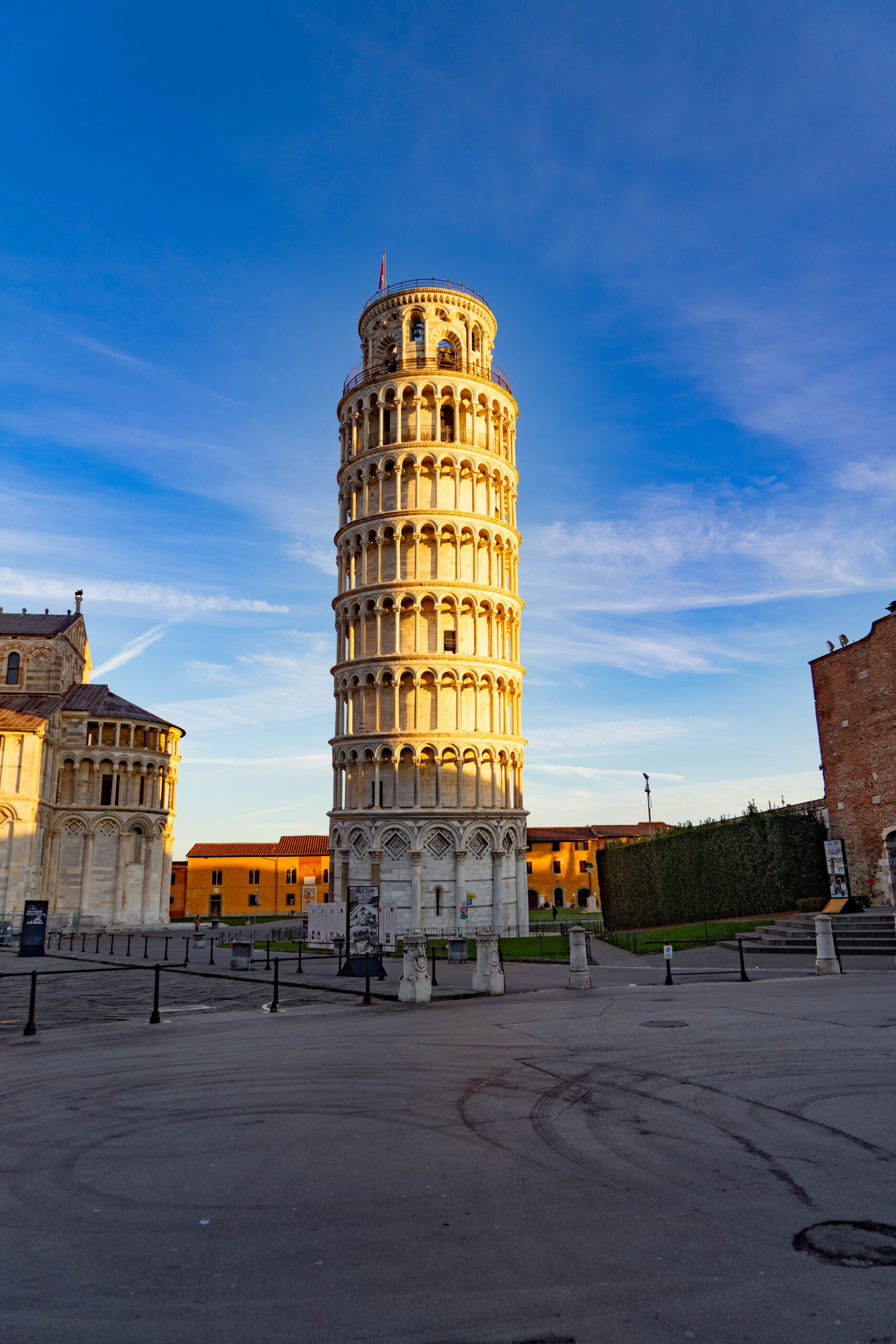
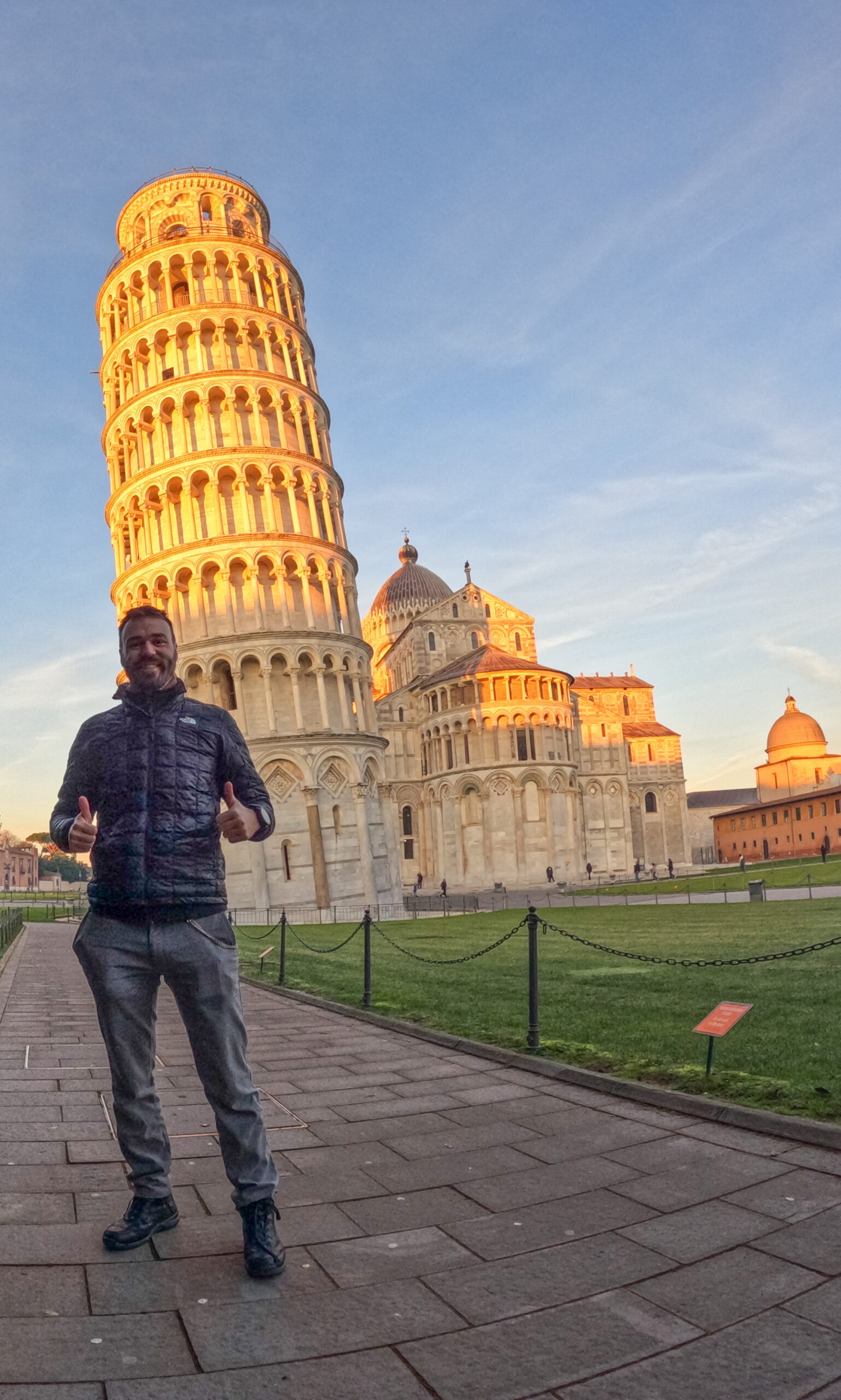
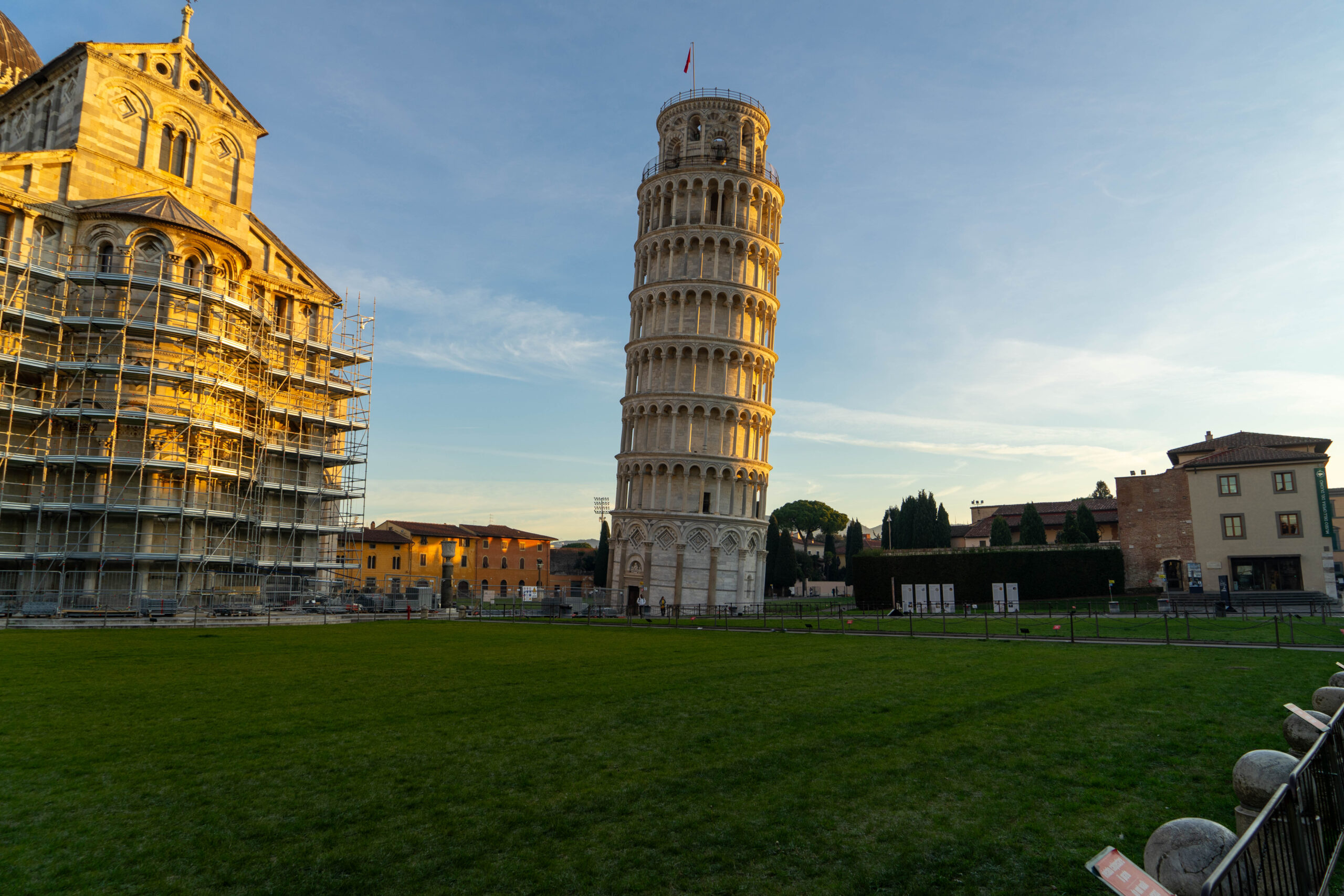
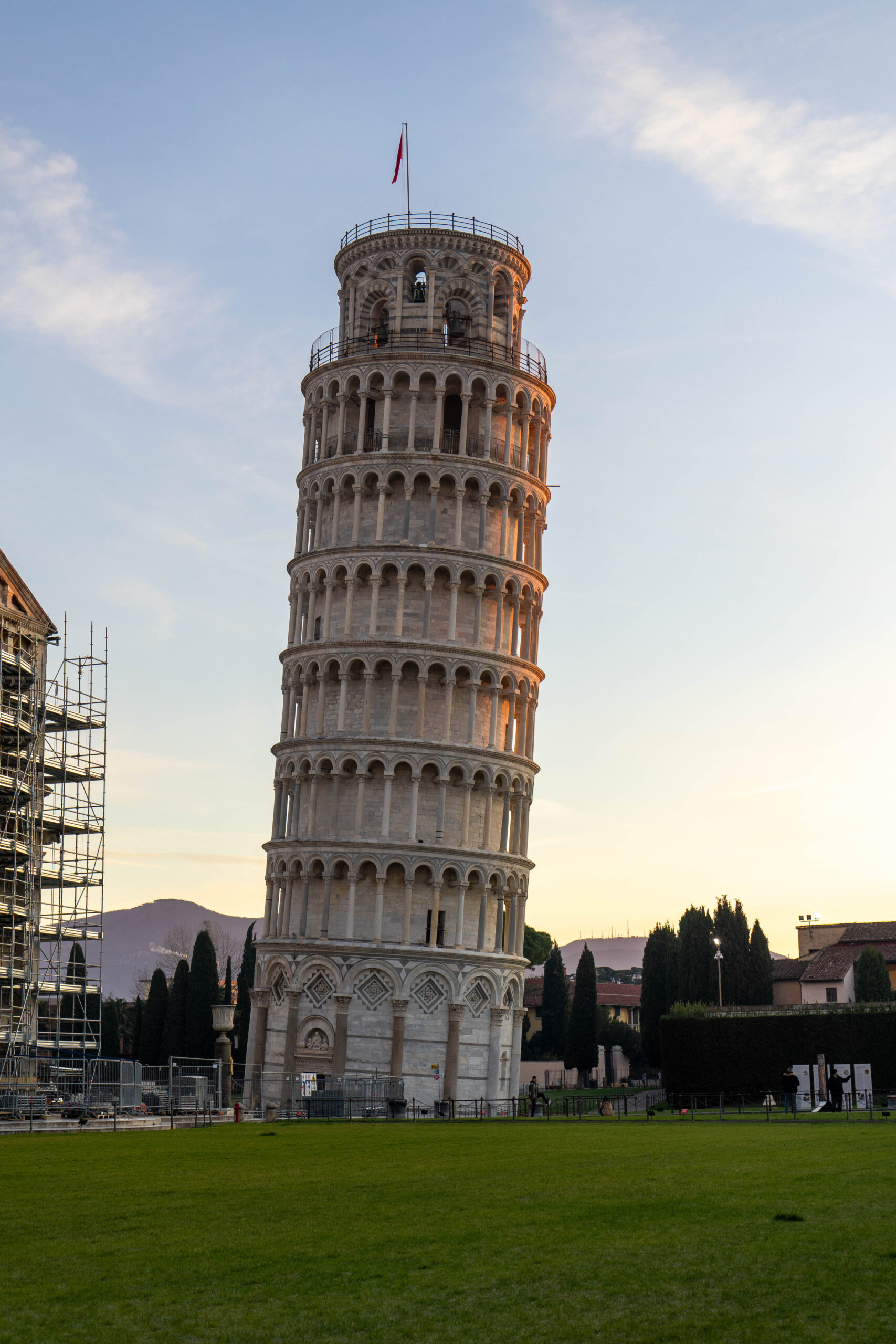
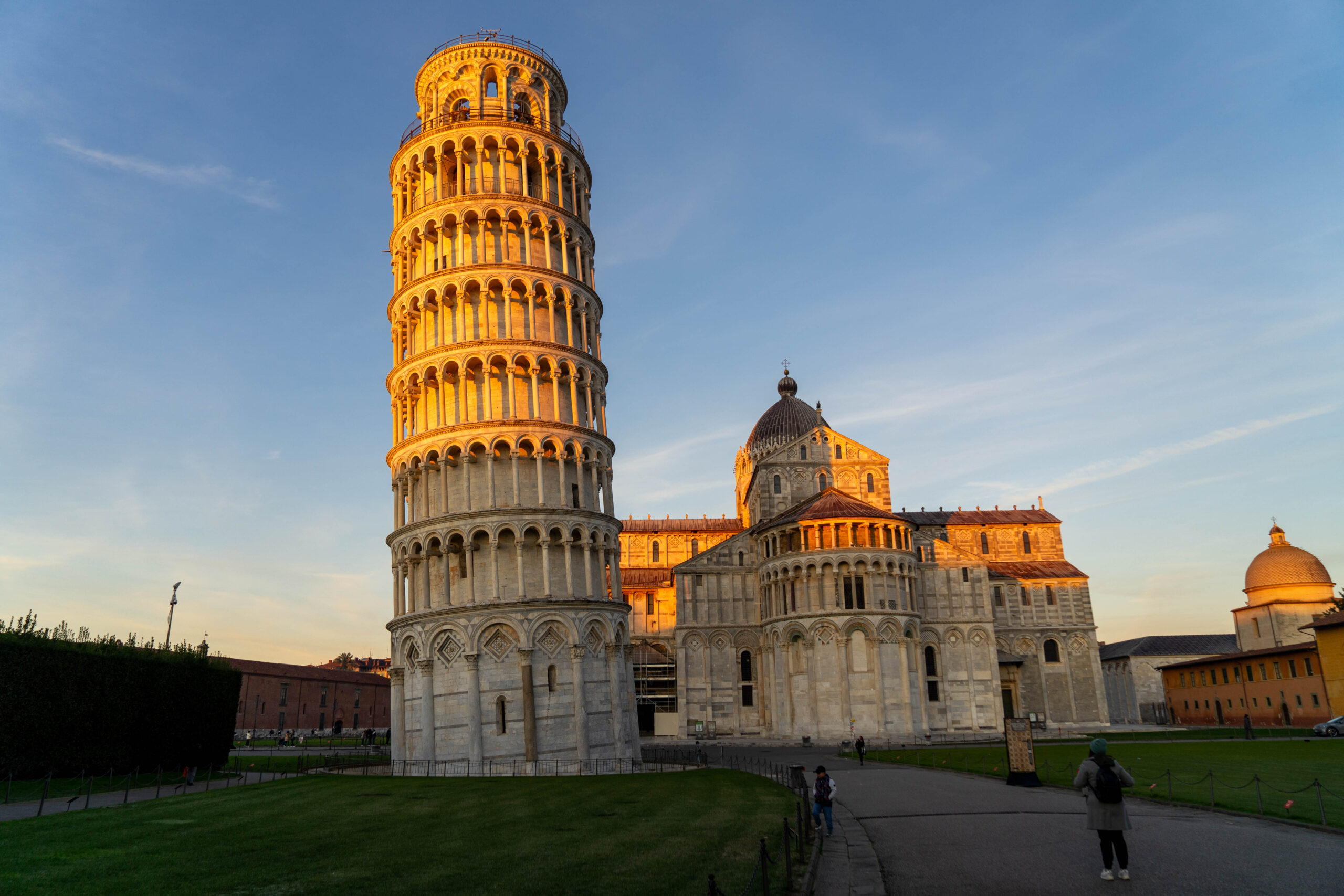
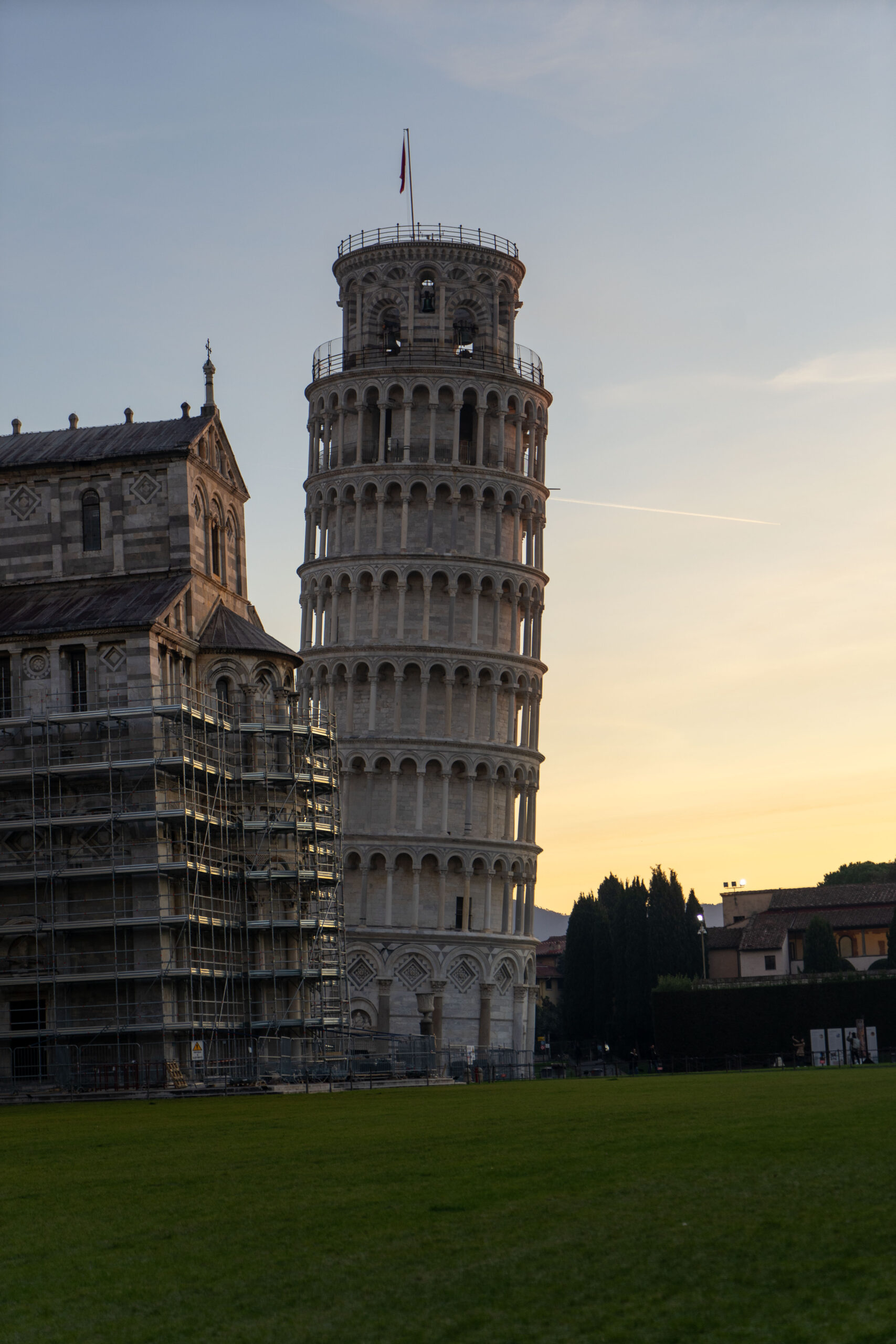

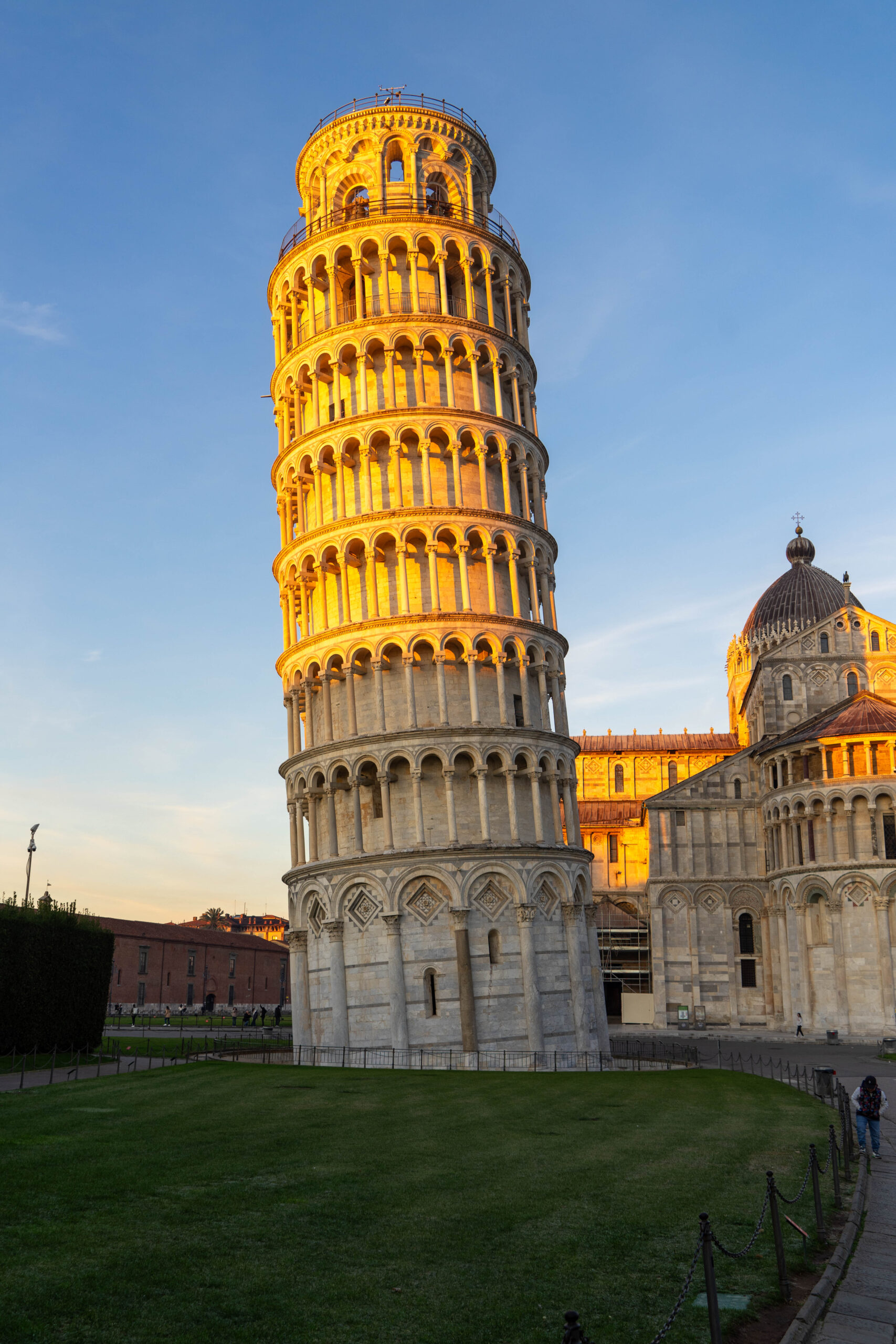
Afterward, I decided to walk back to the hostel instead of taking the bus. It was around 8 AM, and the city was still mostly asleep. The streets were quiet, and I couldn’t find any bakeries open, which was disappointing because I really wanted a fresh pastry. But the walk was nice, and I saw a different side of the city waking up.
Back at the hostel, I finally made up my mind. Even though the reviews were bad and it was expensive for a 12-bed dorm (32 euros!), I booked a night at the hostel in Perugia. I thought it was worth trying, and it would at least be an experience.
At the train station, I got a nice surprise. The Italian train company was having a big system problem, so they announced that all train travel for the day was free! I took advantage of this and got on a train to Siena, where I planned to stop along the way, with a big smile on my face.
Now, Siena’s train station is in a strange place. It’s outside the city center, at the bottom of a steep hill. At first, I did what most people do and took a bus from the station to the city center. I chatted with other passengers on the bus, and we figured out together where to get off. But later, I found a much easier way to get to the heart of Siena.
Next to the train station, there’s a shopping mall, and inside this mall, there are escalators that go straight up to the city center. It’s like a local secret that lets you skip the uphill walk. I thought it was a really clever solution.
And oh, Siena! I fell in love with this city right away. It was nothing like Genoa or Pisa. I felt much safer, and the city was clean and beautiful. There weren’t any strange people hanging out on the streets, and it was just a nicer experience because it was clean and I felt safe. I also noticed that people here were dressed really well. I think you’d never see that in Switzerland, but maybe it’s because it almost never rains here, so they don’t need practical clothes and can focus on fashion. I spent hours walking around the charming streets, enjoying the medieval atmosphere. I visited the Piazza del Campo, the city’s main square, famous for its unique shell shape and the well-known Palio horse race. There was a lot of energy there, a mix of history and everyday life. The Piazza del Campo is considered one of Europe’s greatest medieval squares. They started building it in the 13th century, and it’s been the heart of Siena’s public life for hundreds of years.
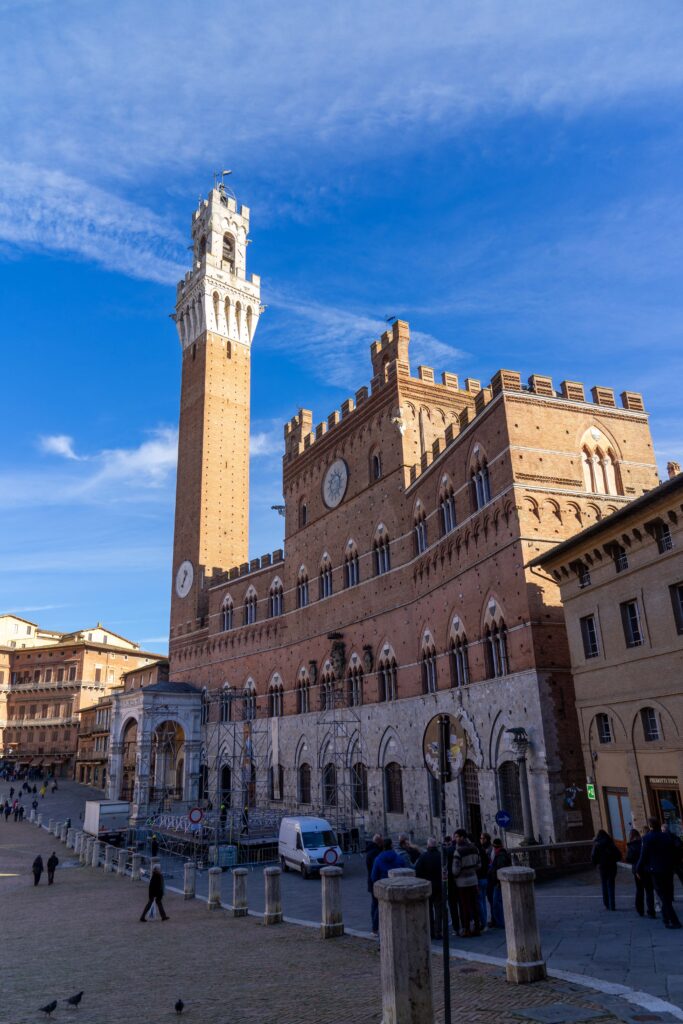
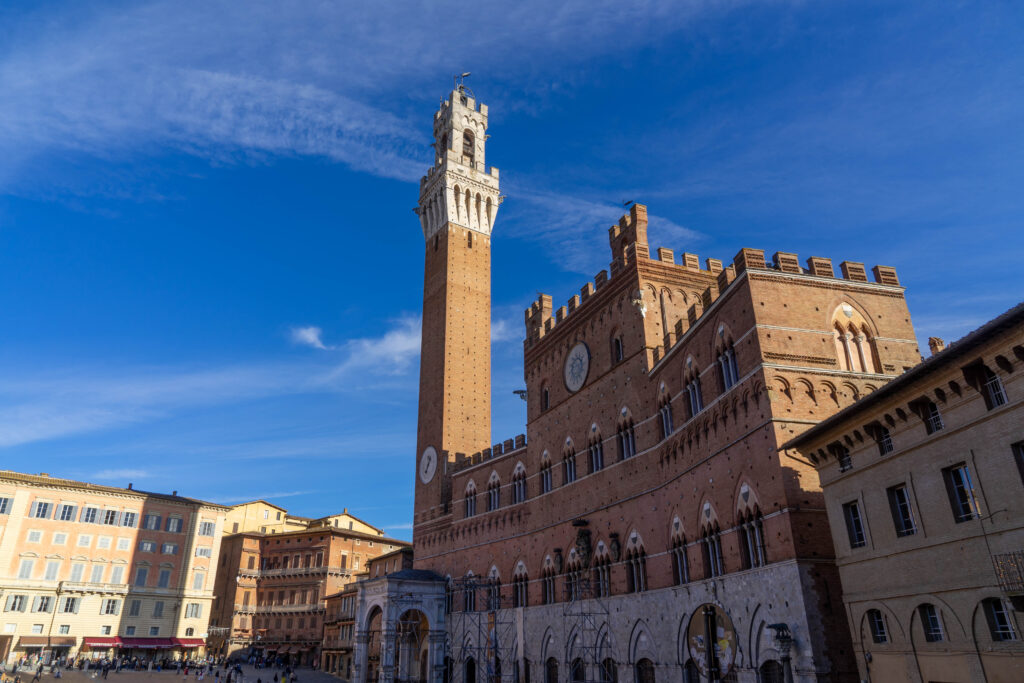
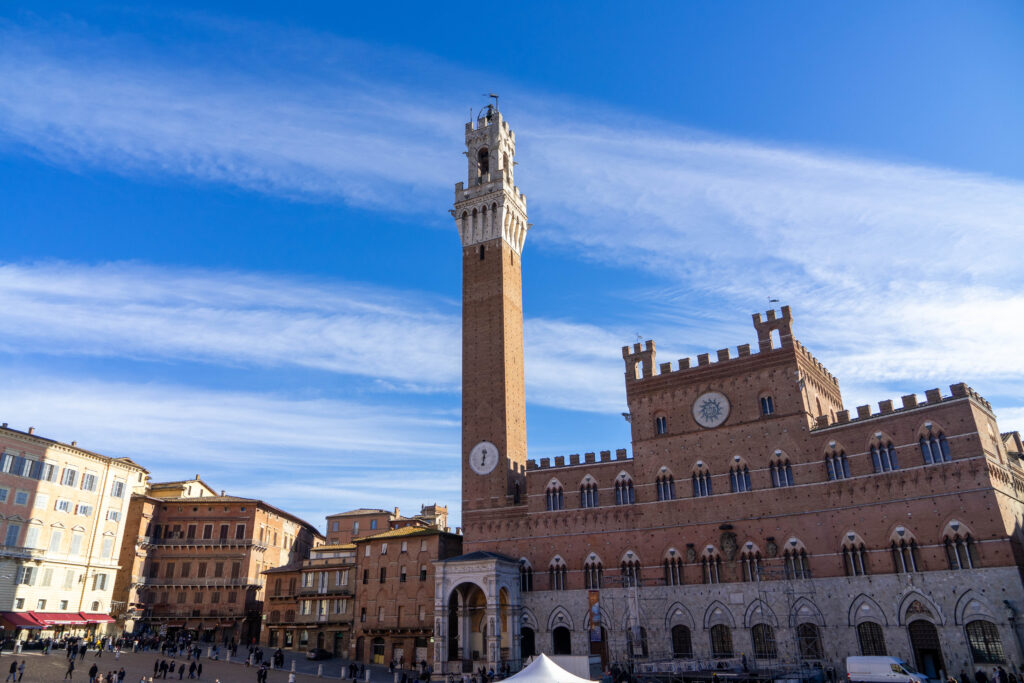
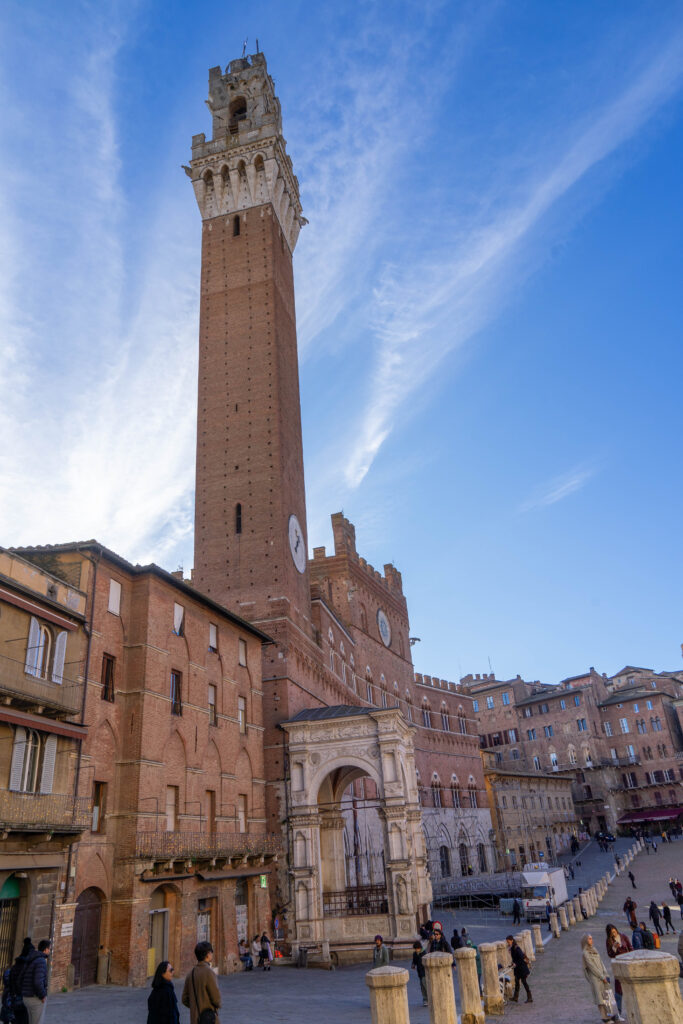
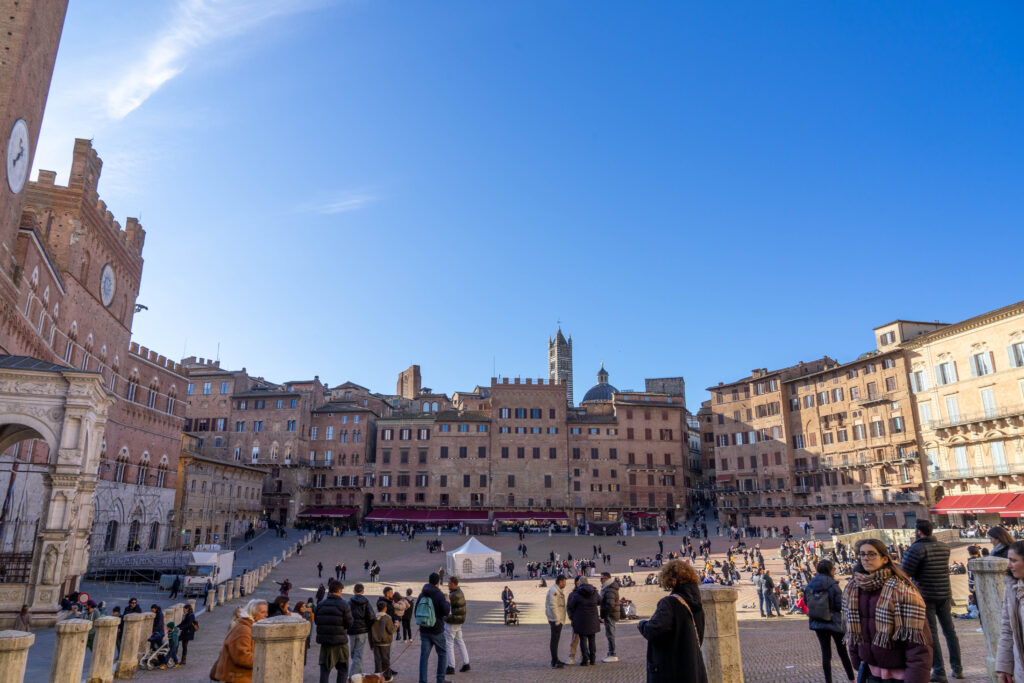

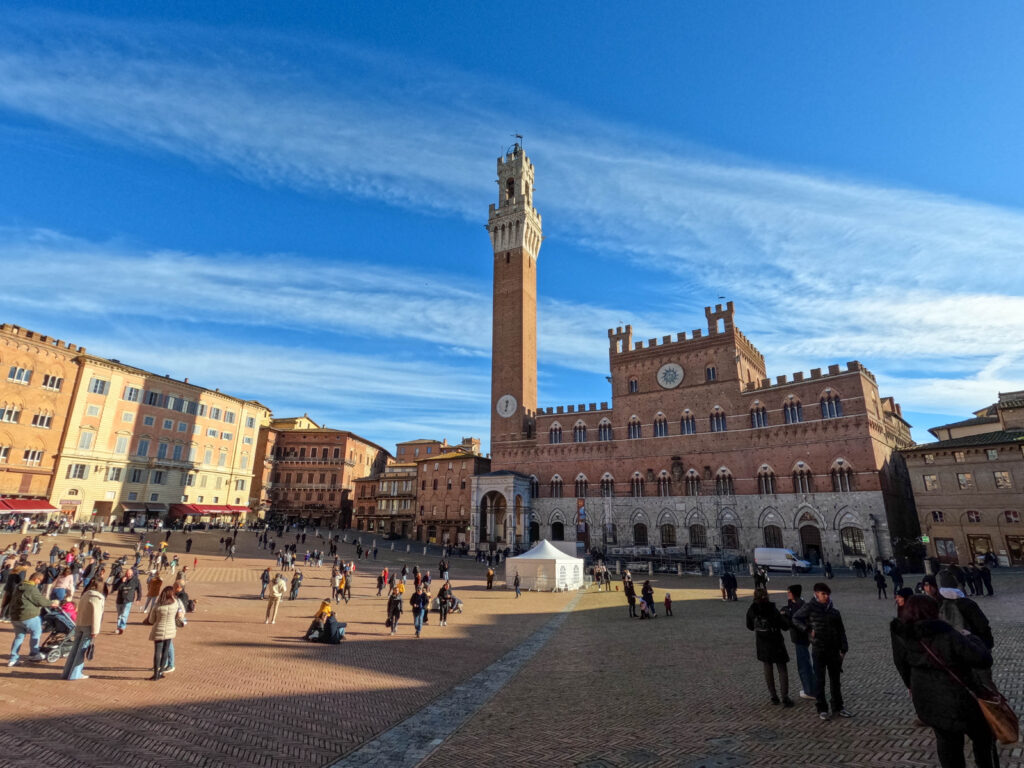
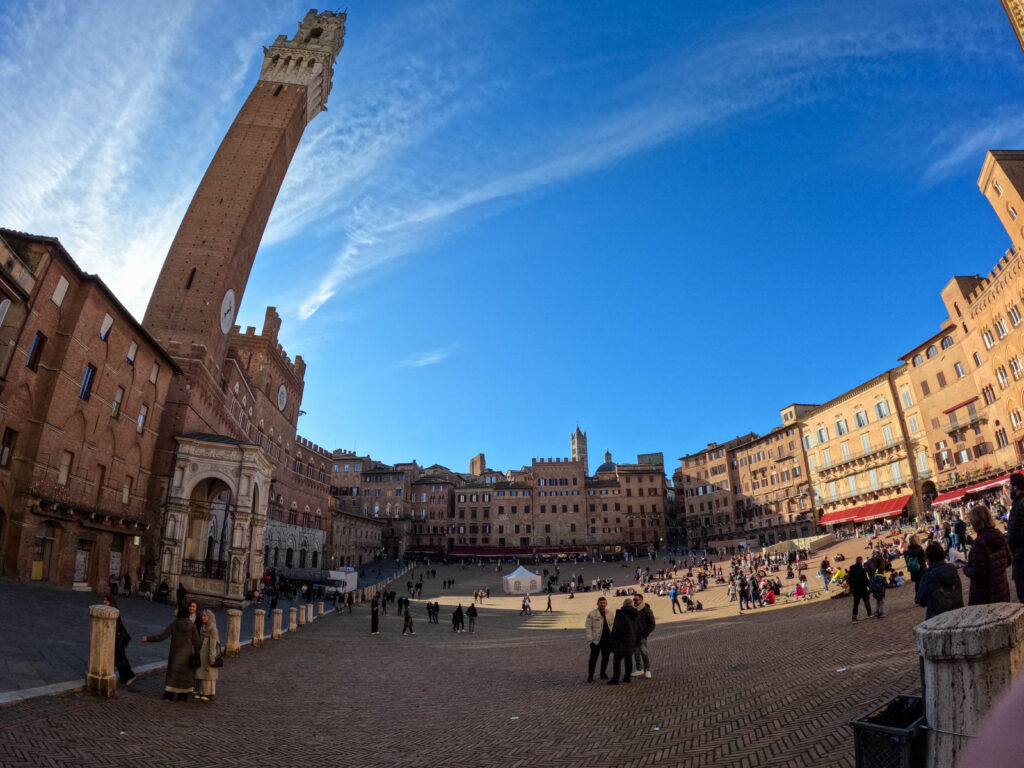
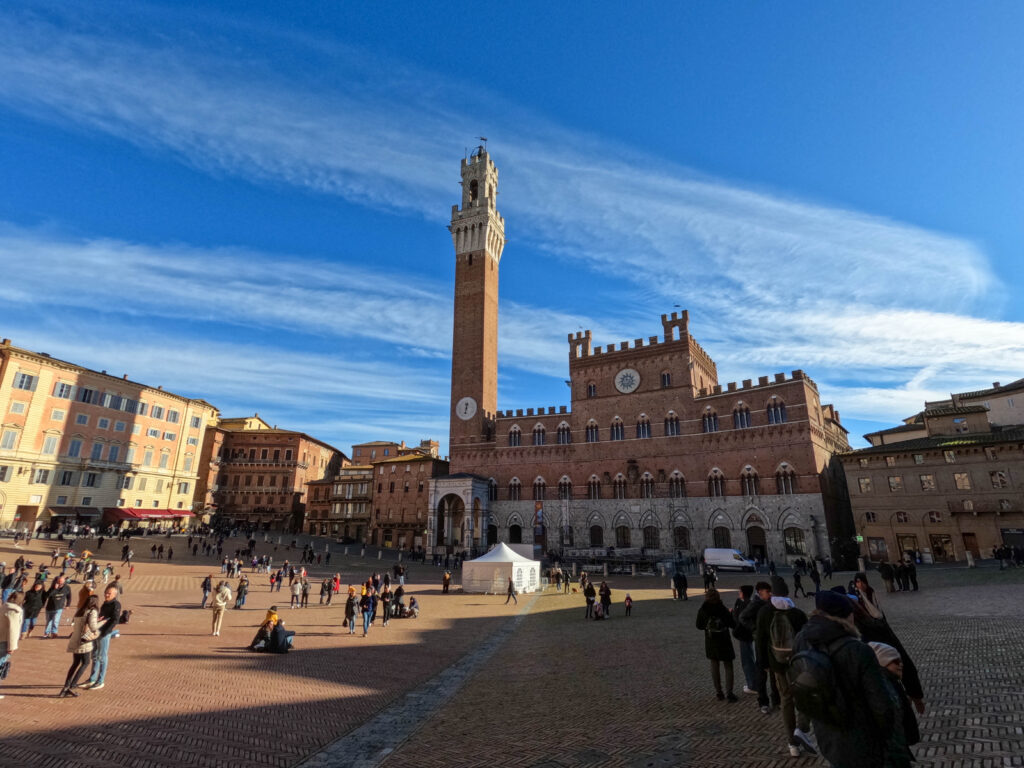
Next, I went to the Duomo di Siena, an amazing cathedral that shows the city’s rich history and art. The detailed front, the huge size of the building, and the feeling it gave me were just incredible. Everyone in the city seemed happy, and many people were singing, which I hadn’t seen before. The Duomo, a masterpiece of Italian Romanesque-Gothic architecture, was built between the 13th and 14th centuries. Its beautiful black and white marble front, detailed sculptures, and stunning inside, including the famous Piccolomini Library, make it one of the most impressive cathedrals in Italy.
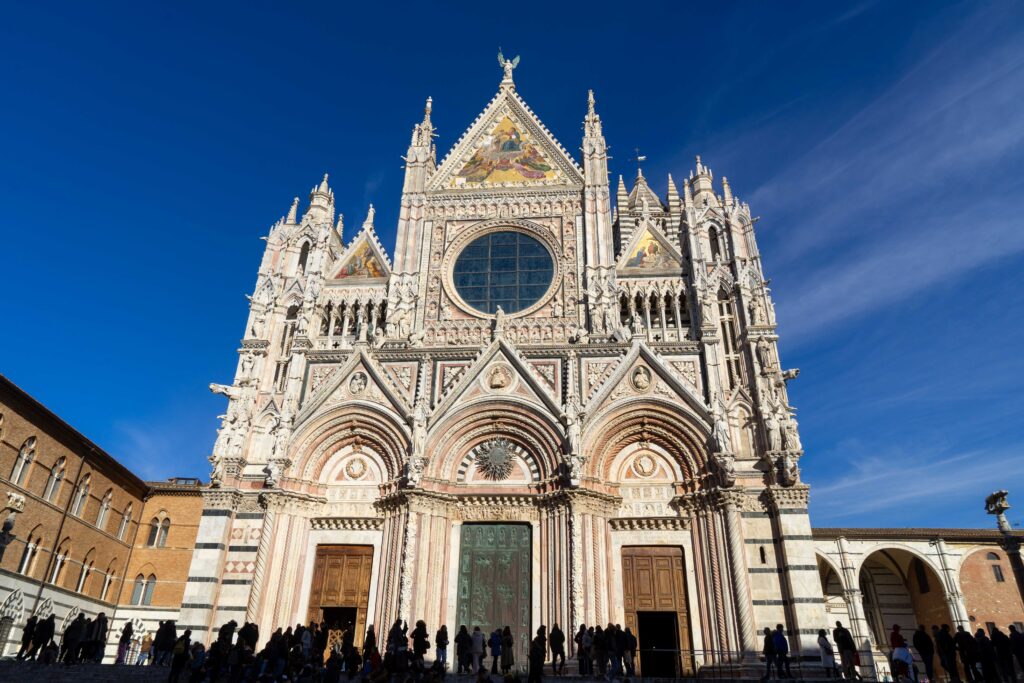
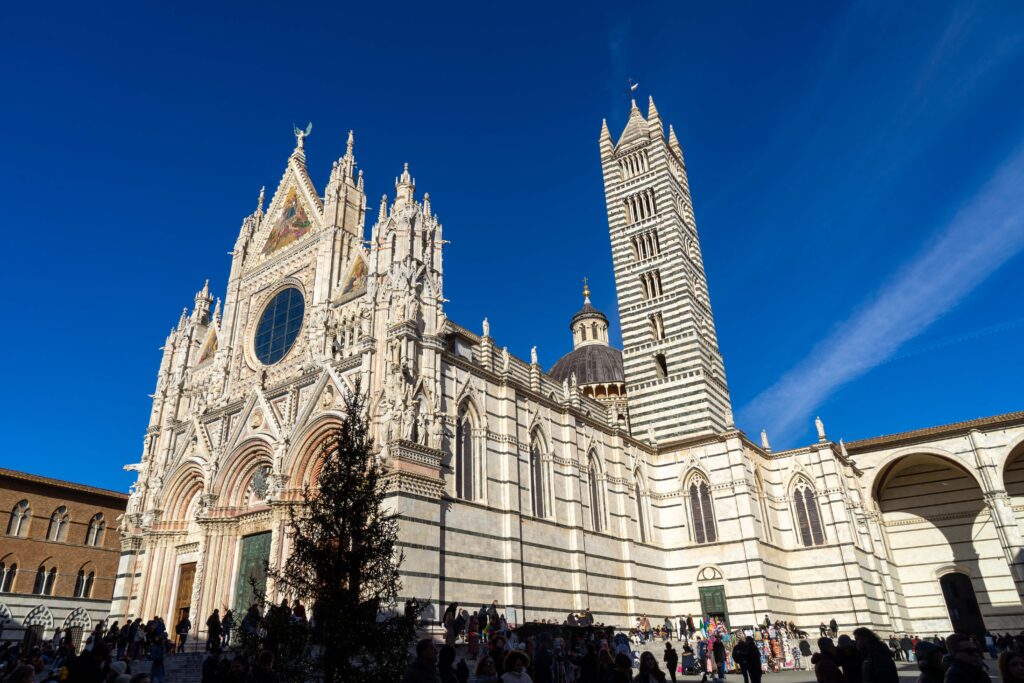
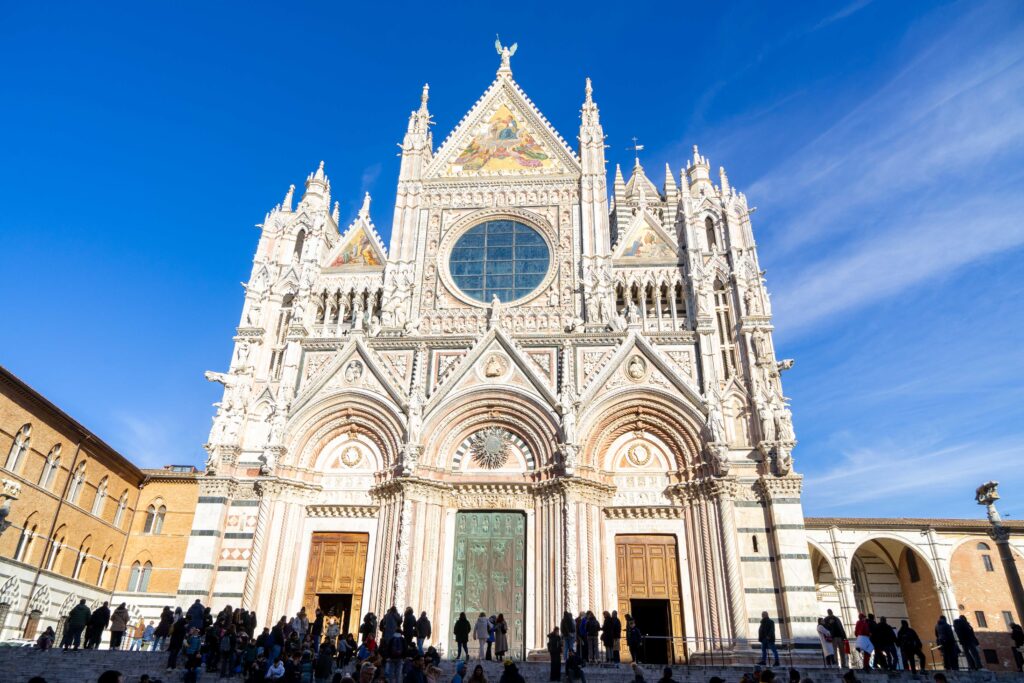
After two hours, I decided to go to the bus station to continue my journey. I took a Flixbus to Perugia. By chance, I met the guy from Kenya again, whom I had talked to the night before. He told me he’d been living in Perugia for 8 years and explained how to get to the city center when we arrived.
With one of the most unusual transportation systems I’ve ever seen: the Minimetrò. This automatic, driverless system is how Perugia deals with its steep hills. It’s a futuristic network of small, pod-like vehicles that take passengers from the lower part of the city to the historic center. Opened in 2008, the Minimetrò was made to reduce traffic and give easy access to the old town. Its modern design is very different from the old architecture of Perugia, and I found the whole idea very interesting. The Italian company Leitner Ropeways, a major maker of cable transportation systems, built the Minimetrò. It’s a great example of Italian engineering, offering a good and efficient solution to the problems of moving around in a historic city.
When I got to the city center on the Minimetrò, I saw an amazing view of the Umbrian countryside. Rolling hills, small villages, and green fields stretched as far as I could see. I took a moment to enjoy the view before going to what would be my most unusual place to stay yet.
The only hostel in Perugia was, not surprisingly, fully booked. Even though it had bad reviews and a 12-bed dorm room with triple-decker bunk beds – something I hadn’t seen since my army days – I decided to try it. It was the only option, and at 32 euros a night, it was an experience I was paying a lot for. The location, in the historic center, was great, but that was about the only good thing.
The hostel was full of interesting characters, each with their own story. One person, in particular, stood out. He claimed to have a life story that went across continents: born in Germany, raised in Italy, studied at Stanford University in California, lived in New Zealand, and now back in Italy. He seemed very proud of his Stanford education but also acted a bit strangely – smoking, drinking, and seeming happy to spend his days in this odd hostel. It made me wonder about his life choices and what had brought him there.
In the evening, I decided to try a restaurant this guy recommended. He insisted on making a reservation for me, saying I wouldn’t get a table otherwise. So, at 7 PM, I found myself in a completely empty restaurant, once again questioning if I should take advice from strangers, especially about food. It was nice of him to organize it and even call the restaurant, but it was a bit much. The waiter was friendly, though, and we had a nice chat. But the food was a big letdown. I ordered tortellini, and I can honestly say the ones I make at home are much better.
While I was finishing my meal, four men came into the restaurant. I noticed one of them had a cochlear implant from Advanced Bionics. Knowing a bit about the company, I started a conversation with him. We talked briefly about his experience with the implant. Then I paid and went for another walk around the city.
The streets were pretty quiet, and the cold kept most people inside. By 9 PM, I decided to go back to the hostel, hoping for a better night’s sleep.


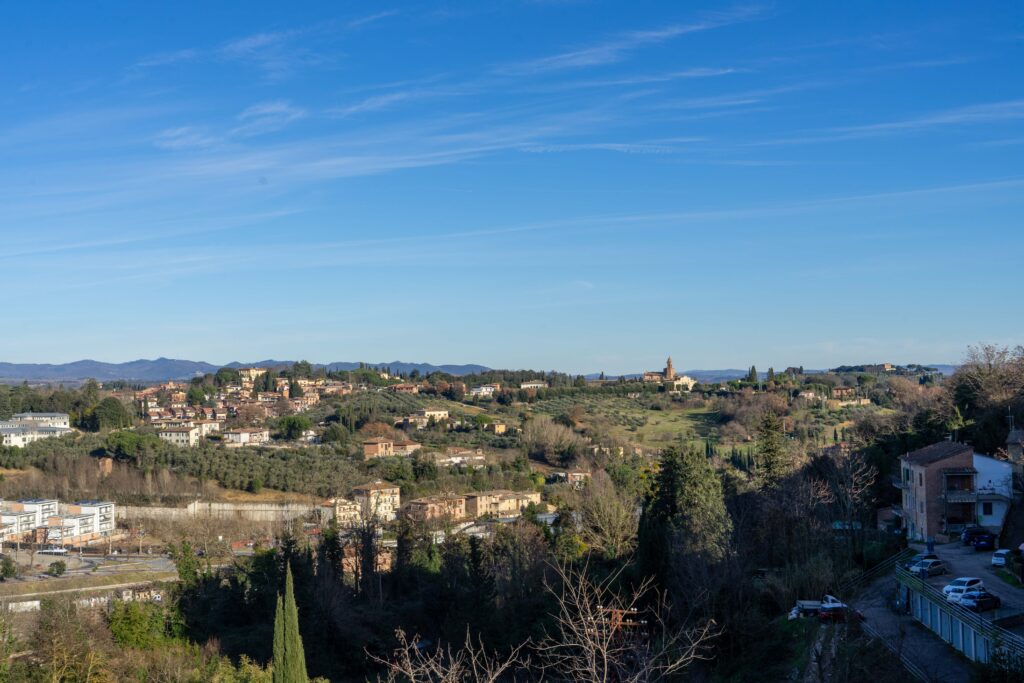
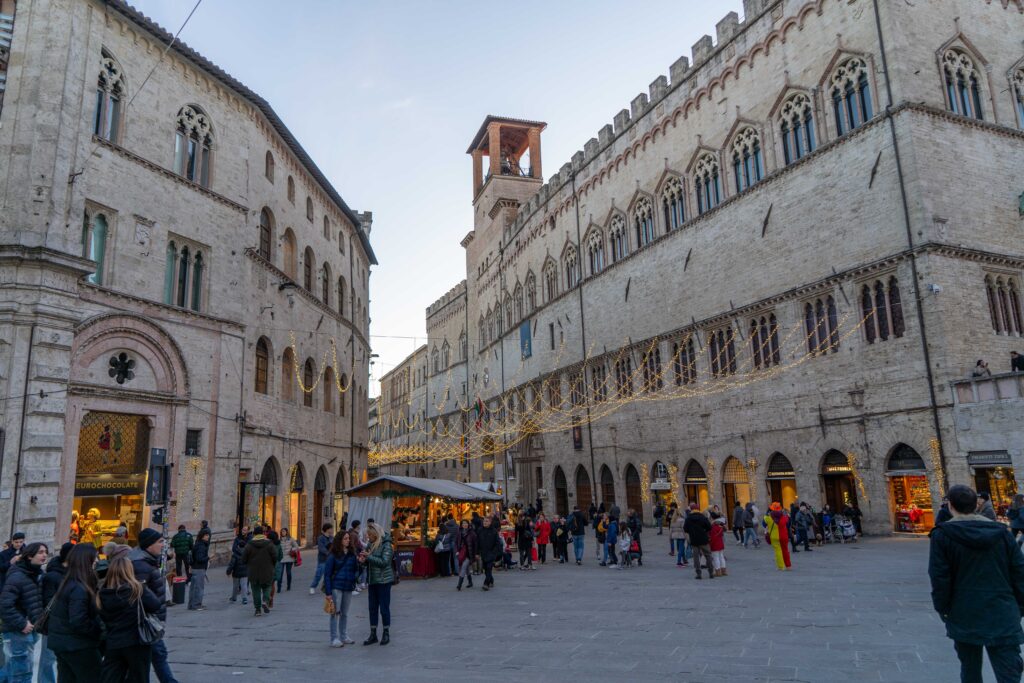
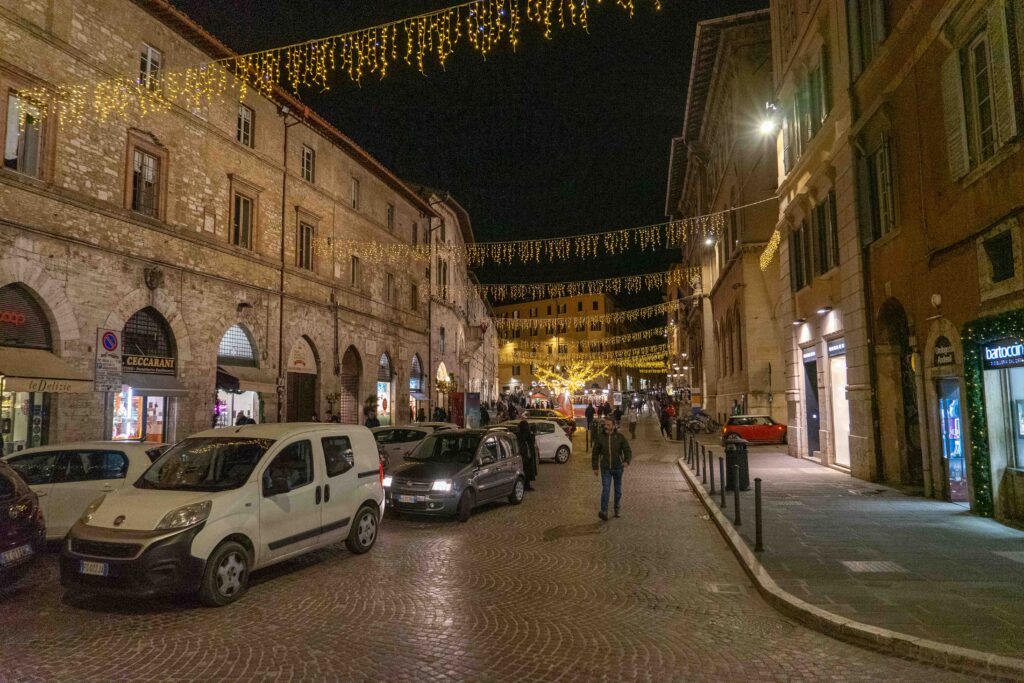
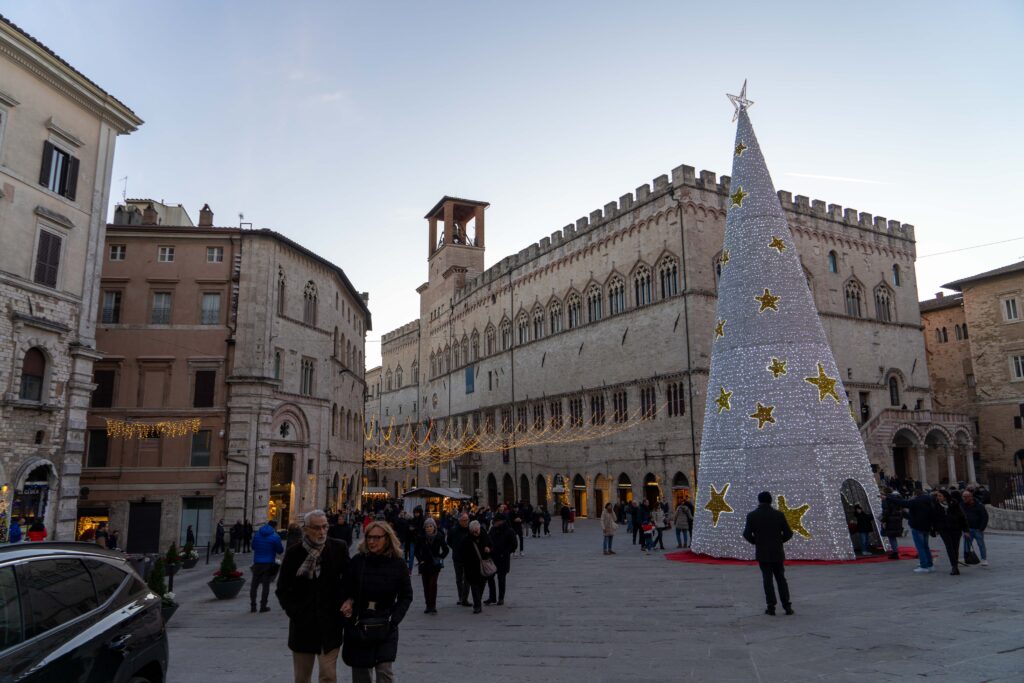



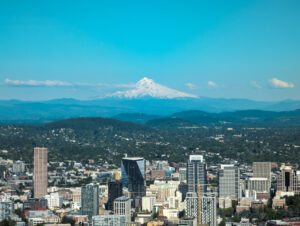

Pingback: Sunrise, Inefficiency, a Hilltop Haven and a new city – Matthias Meyer
Pingback: Coastal Charms of Cinque Terre – Matthias Meyer